
Your journey with Norrsken
Expert partnership and real support every step of the way.
Creating exceptional homes takes more than great products - it requires meticulous planning, good communication and competent execution.
Our approach combines technical expertise with genuine care for your project's success, whether you're a homeowner building your dream space, an architect crafting award-winning designs, or a developer delivering exceptional developments.
Two essential tips for project success:
-
Start Your Journey Early
We're passionate about delivering your windows and doors exactly when you need them, seamlessly integrated with your project timeline.
The earlier we can begin working together, the more time we have to perfect every detail and ensure smooth delivery that keeps your project on track. Think of early engagement as giving your project the best possible foundation for success.
-
Share Every Detail that Matters
Your vision is unique, and we want to capture it perfectly.
From window reveals and sill details to floor level transitions, color variations across different openings, fire escape requirements, or accessibility features—every specification helps us create exactly what you need.
The more thoroughly you can share your requirements with us, the smoother your journey becomes and the more confident you can be in the outcome.
Step by Step
Your journey begins with a simple conversation.
From initial conversation to long-term support, here's how we ensure your project runs smoothly from start to finish.
Ready to get started? Call the team now on 01202 632777
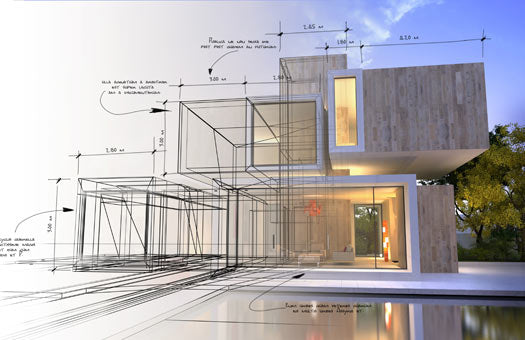
STEP ONE
Discovery & Vision
Understanding your unique requirements and aspirations.
We begin by exploring your project's specific needs, your aesthetic preferences, and energy-efficiency goals or low-energy standards you’re building to.
Upload your drawings and project images through our smart enquiry forms to streamline the process. We'll discuss our minimum order requirements transparently, as these vary by location and project scope.
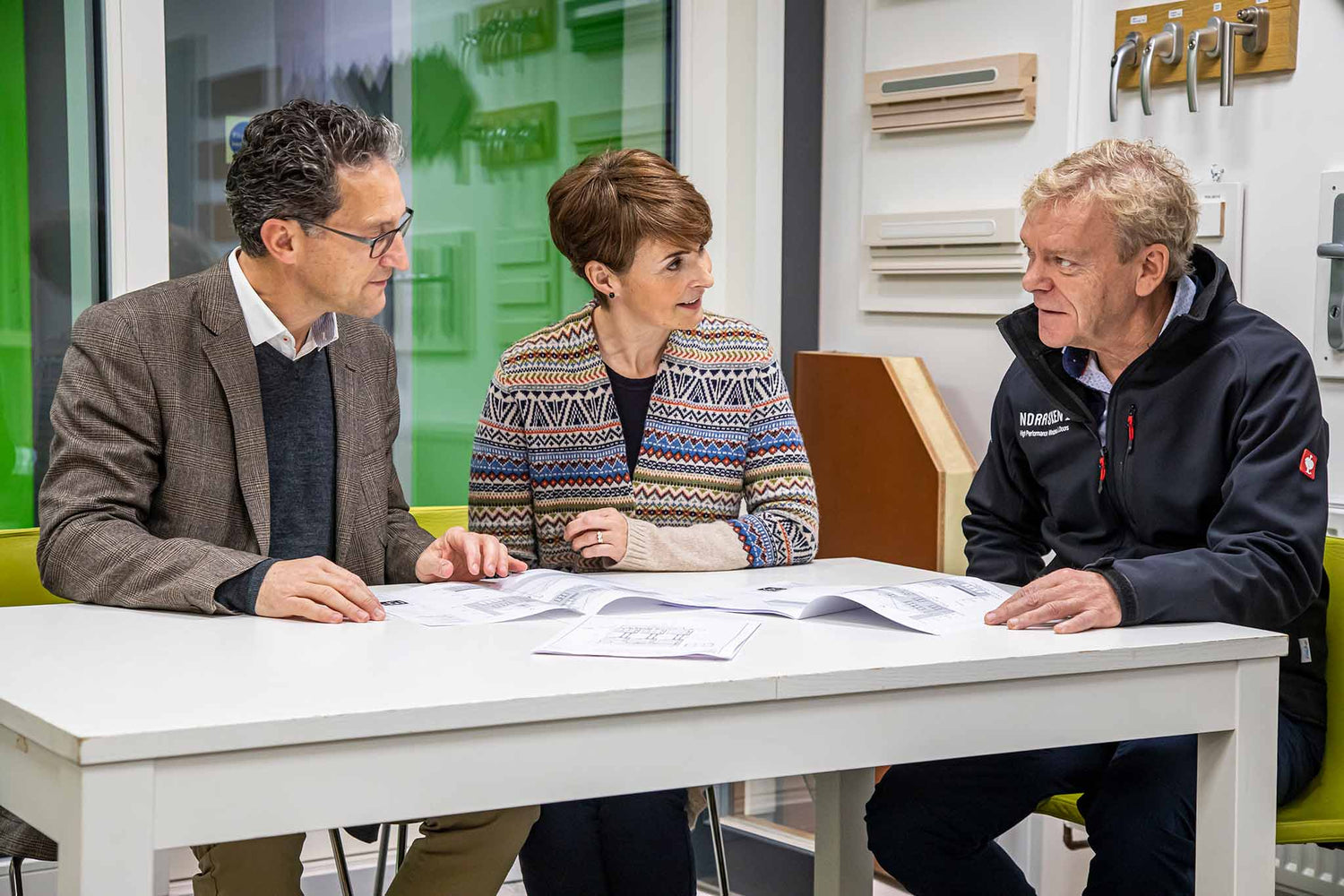
STEP TWO
Tailored Solutions
Once we have a full understanding of your project and requirements, we craft solutions to meet your requirements.
We’ll ask you about the nature of the development, the type of windows and doors you need and service requirements - from surveying and technical drawings to installation and lifting equipment coordination.
Our experienced team works collaboratively with homeowners, architects, and site managers to ensure proposals work both on paper and in reality. Design evolution is natural in any project, and we support you through refinements until everything aligns perfectly.
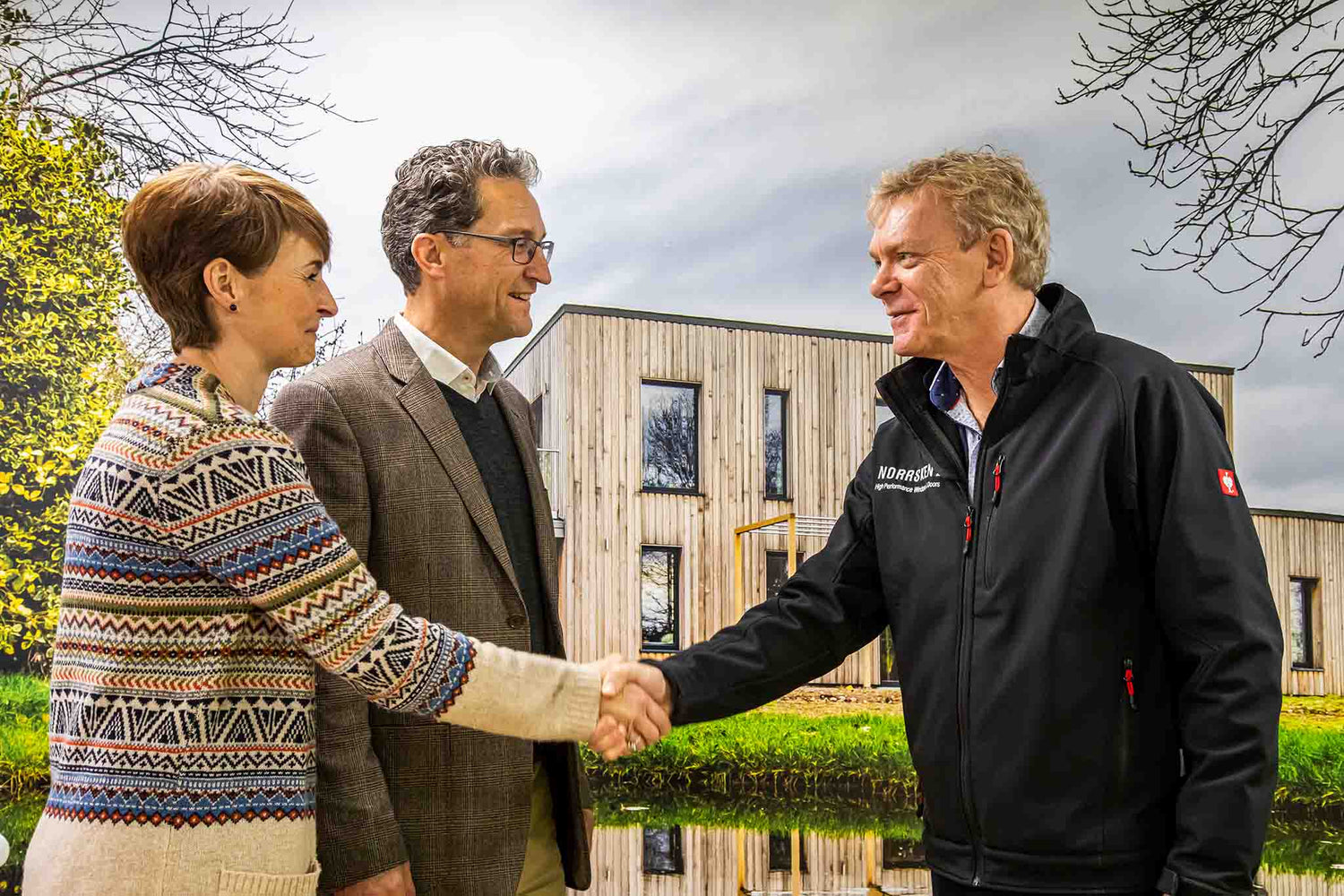
STEP THREE
Partnership Commitment
Dedicated support from order confirmation through completion.
When you're ready to proceed, we become your committed partners with a 10% deposit that initiates our detailed planning process. This ensures every element is confirmed before precision manufacturing begins:
Survey
We'll work with you to determine whether a survey is needed for your project, and if so, recommend the most suitable approach for your specific situation - whether it's a new build, refurbishment, or window replacement.
Finalising the specification
We’ll work together to refine every detail that will make your windows and doors uniquely yours - from colours and finishes to hardware, final dimensions and configurations. We guide you through the choices that matter most to you. This collaborative process ensures everything aligns perfectly with your vision, with timescales depending on the complexity of your requirements and how clear your preferences are from the outset.
Final Approval & Production
We present a comprehensive overview of your complete order for final approval. This thorough review ensures complete confidence before manufacturing begins, giving you peace of mind in your investment while we bring your vision to life with precision and care.

STEP FOUR
Progress Coordination
Coordination with your project timeline.
While your bespoke products are being manufactured, we maintain active coordination with your project schedule. We communicate preparatory requirements, coordinate delivery logistics, and conduct site visits when needed where installation has been purchased to ensure seamless integration with your build program and site team.
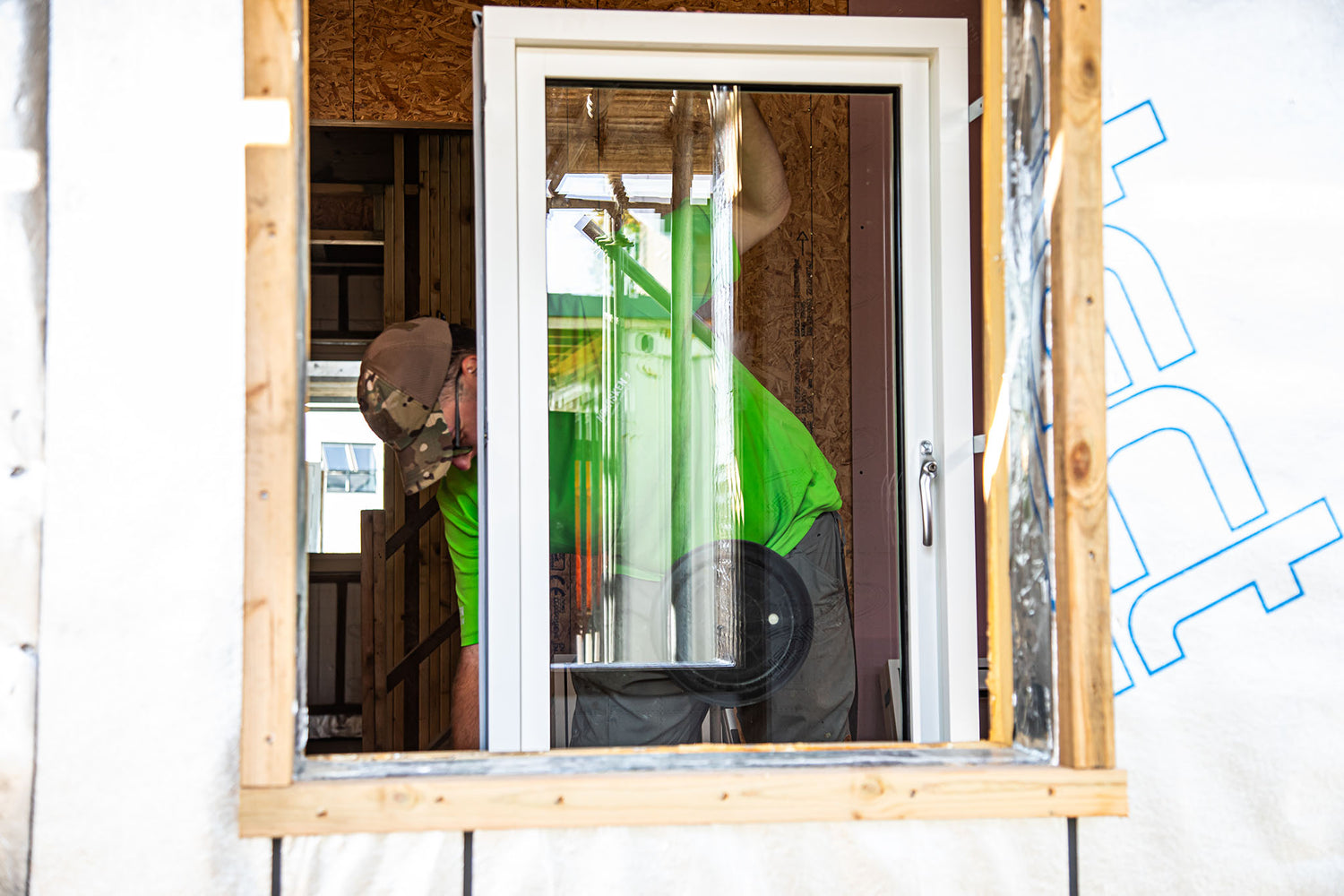
STEP FIVE
Expert Installation
Professional fitting with safety and precision as priorities.
Where installation has been purchased, once site preparations are complete, we carry out the installation of your new windows and doors.
Our experienced installation teams operate with meticulous attention to safety, site protection, and precise fitting. Whether working around occupied homes, active construction sites, or complex architectural details, we minimize disruption while ensuring professional results.
Upon completion, we conduct thorough quality checks with you or your site manager, address any final details, and provide comprehensive handover documentation.

STEP SIX
Ongoing Partnership
Long-term support that extends far beyond installation.
Your relationship with Norrsken continues well beyond project completion. Our service engineers and customer care team handle post-installation adjustments, provide ongoing technical support, and serve as your dedicated contact throughout the warranty period.
This commitment to lasting partnership ensures your investment delivers exceptional performance and satisfaction for decades to come.
Unmistakably trusted.
The highest compliment is a recommendation. These are the voices of those who placed their trust in us.
"Excellent Company from start to finish… If only every window supplier operated like this! I have used many others over the years on various projects but Norrsken far exceeded all of them… I hope this helps you make a decision for what is probably a large chunk of your budget… They are totally worth it"
Angela Smith
Self Builder
“Having used Norrsken in the past we were happy to recommend them to one of our clients who was looking for the best sound proofing and weatherproofing they could get being set on a hill top overlooking the sea and facing strong westerly winds. They were not disappointed. A quality product, delivered well and on time. Thankyou.”
Ken Pearson
Homeowner
"Fantastic professional service, from the original design to the final installation. The triple-glazed windows and doors that have been fitted to our new house are of a very high quality and look amazing. We definitely made the right choice when we decided to use Norrsken, nothing is too much trouble for them."
Nigel
Homeowner
"I did my research before contacting Norrsken but they had come highly recommended by our Architect for our Passive House self build.
From the first meeting with Nick we felt confident that they were the Company for us."
Ali and Brian Manning
Passive House Self Builders
“The quality of the triple glazed, alu-clad windows and doors is superb. They feel so reassuringly solid ... I opted for a wood stain for the internal finish on the frames, and am so glad I did, as it shows off the beauty of the wood perfectly. The whole process from order to installation went smoothly. I thoroughly recommend Norrsken.”
Gareth
Homeowner
"Norrsken provided attentive service from drawings to on-site installation for our project at National Trust Stourhead and we would definitely recommend and repeat commission them on future projects."
Charlotte Hill-Baldwin
Architect, H-B Designs
“From our very first interaction to the aftercare support, Norrsken has been exceptional. The quality of their windows is outstanding - beautifully designed, expertly crafted, and a real standout feature in our home. They've truly elevated the overall look and feel of the house.”
Neil Southwell
Self Builder Homeowner
“I can highly recommend Norrsken… After much research I found that Norrsken could beat all of the quotes for a high quality triple glazed option. The windows are beautifully crafted and have received lots of positive comments…. I found the whole team at Norrsken incredibly friendly and helpful…”
Douglas Munro
Selfbuilder
Service Committment
Supporting you with care, expertise, and genuine partnership throughout your journey.
-
Relationships
Our dedicated Customer Service Team begins nurturing relationships from the moment you place your order, maintaining supportive contact throughout your entire project.
We understand that building projects can feel overwhelming, and we're here to provide reassurance, guidance, and support whenever concerns arise.
-
Experience
Our teams bring real construction experience to every interaction, often providing valuable insights that extend well beyond windows and doors.
This deeper knowledge means we can offer practical guidance that helps your entire project run more smoothly and successfully.
-
Communication
Open communication, responsive service, genuine empathy, and complete transparency form the foundation of every positive client experience.
When challenges arise, we focus on swift resolution and clear updates. If immediate solutions aren't possible, we ensure you feel supported throughout.
-
Feedback
We actively seek feedback from every client because your insights drive continuous improvement.
Every lesson learned helps us refine our approach, ensuring future clients benefit from an even better experience.
This commitment to growth reflects our genuine dedication to excellence in service.
Quality & Performance
Excellence lies in the details. Every component of our windows and doors is precisely engineered to deliver exceptional thermal performance.
From advanced timber-aluminium construction to cutting-edge glazing systems, we ensure your home achieves both stunning aesthetics and outstanding energy efficiency. Our windows and doors are built to last decades, backed by our comprehensive 10-year warranty that reflects our confidence in superior craftsmanship.
Collapsible content
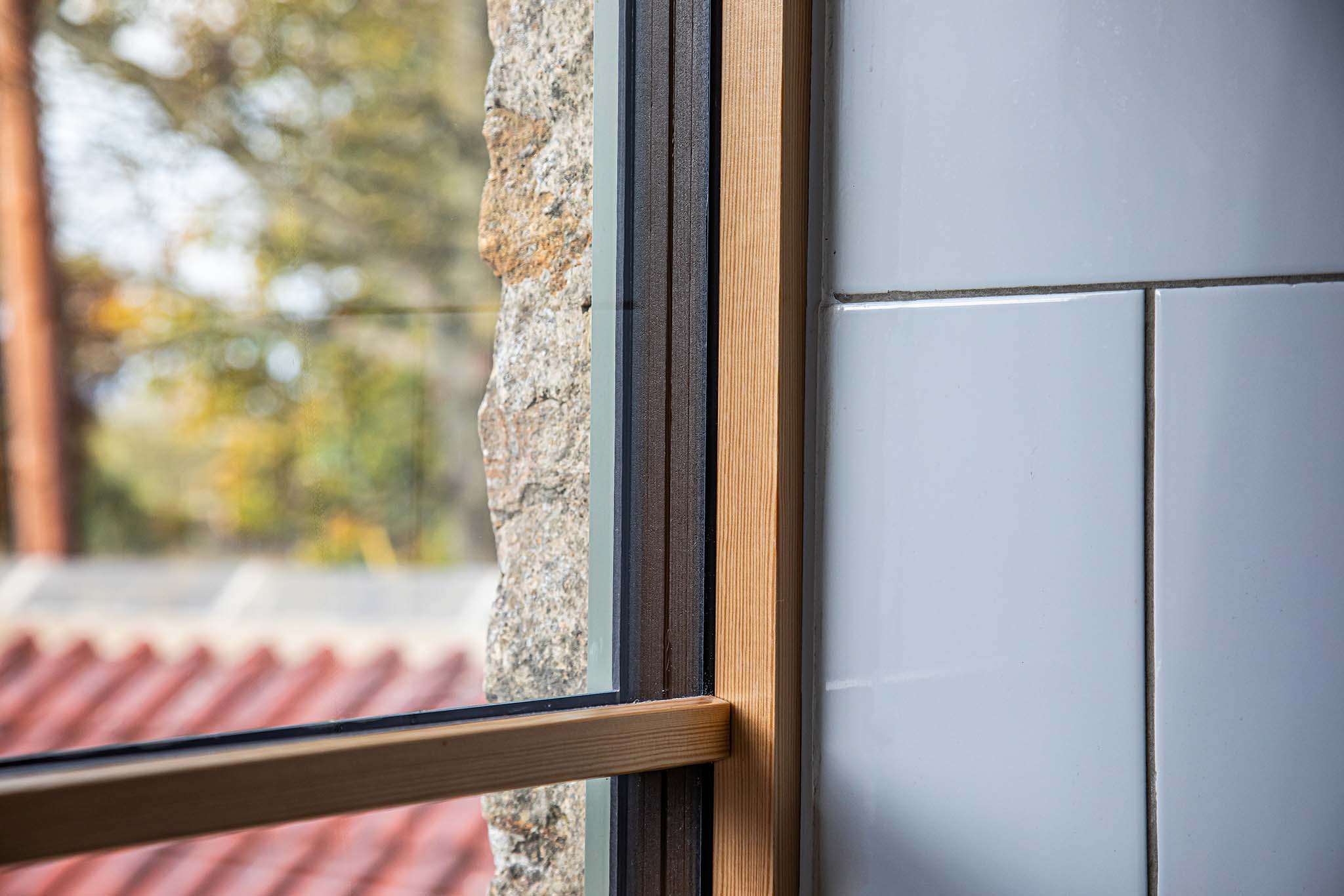
Energy Efficiency
Thermal performance drives everything we do.
Our windows and doors achieve market-leading U-values through intelligent engineering - combining the superior insulation properties of timber with the durability of aluminium cladding.
Every element contributes to efficiency: argon-filled glazing units provide 60% better insulation than air-filled alternatives, while warm-edge spacer bars eliminate thermal bridging.
Advanced sealing systems ensure minimal air leakage, creating windows and doors that significantly reduce energy consumption, help projects achieve incredible blower-door test results, and maintain perfect comfort year-round.
The result? U-values as low as 0.64 W/m2K while supporting your most ambitious architectural visions.
Frames
Timber-aluminium composite windows are the pinnacle of window engineering.
While aluminium alone conducts heat over 1000 times more efficiently than timber (making it a poor insulator), our engineered timber frames provide exceptional thermal insulation. External aluminium cladding protects the timber from the elements while enabling deeper glazing units for enhanced performance, delivering the best of both materials without compromise.
This hybrid approach eliminates the thermal performance limitations of all-aluminium systems while overcoming the maintenance challenges of exposed timber.
Each frame is precision-manufactured to your exact specifications, accommodating complex geometries and custom profiles while maintaining structural integrity and thermal performance.
Available in any RAL colour combination and custom finishes, our frames enhance both traditional and contemporary style buildings without compromising on performance.
Glass
Advanced glazing technology maximises thermal performance while optimising natural light and visual clarity.
Our double and triple-glazed units feature low-emissivity coatings that allow beneficial solar gain while reflecting interior heat back into your spaces.
Triple glazing delivers superior performance for passive house standards and demanding climate conditions, while our high-performance double glazing offers excellent efficiency for most applications. Each configuration uses argon gas filling between panes, significantly reducing heat transfer compared to standard air-filled units.
Warm-edge spacer bars eliminate the thermal bridging common in conventional glazing systems. Made from advanced low-conductivity materials, they maintain optimal glass separation while accommodating thermal expansion and preventing moisture infiltration.
Specialised glass options include acoustic glazing for noise reduction, security glazing for enhanced protection, and decorative options including integrated blinds and pattern glass.
Options
Design freedom extends to every detail.
Our comprehensive customisation capabilities include dual colour finish, custom shapes and designs for unique architectural features, and specialised hardware selections that complement your project’s style.
Opening configurations adapt to any architectural requirement: inward and outward opening windows, sliding systems, bi-fold doors, and tilt & turn windows - all engineered to maintain our thermal performance standards.
Custom glazing bars, decorative glass options, and integrated shading systems provide additional design flexibility.
Advanced features include automation-ready hardware for smart home integration. Our technical team collaborates with you to develop solutions for bespoke features where necessary.
Security
All Norrsken products conform to PAS 24:2016 enhanced security requirements. Multi-point locking systems engage at multiple points around the frame perimeter, providing superior resistance against forced entry while maintaining smooth operation.
High-security glazing options include laminated glass that remains intact when broken, and toughened glass for areas requiring enhanced impact resistance. Advanced locking hardware meets the highest security standards while integrating seamlessly with our aesthetic design options.
Regular security testing ensures our systems meet evolving standards. During testing, products are put through loading tests – 200kg of pressure on windows and 500kg of pressure on doors. Once these tests are passed, the products are put through manual attack.
Rigorous safety standards ensure that your specifications deliver both protection and performance throughout the building's lifecycle.
Installations
Every installation includes comprehensive snagging, inspection, and correction procedures, with full documentation for warranties and building control approval.
Our operations team continuously monitors site progress while the windows are in manufacture. We conduct pre-installation checks to ensure our timescales align with actual site conditions and communicate requirements to your on-site team.
Through rigorous quality control processes - from delivery inspection through final sign-off - we ensure installations meet building regulations, manufacturer specifications, and client expectations.
Our trusted installation partners work nationally, carefully managed by our operations team to maintain standards that reduce callbacks, eliminate defects, and uphold project timelines.
-
Snagging
Proactive quality control begins the moment products arrive on-site. Our installation teams operate a comprehensive two-stage snagging system - during delivery, and throughout the installation -designed to identify and resolve potential issues prior to handover.
-
Inspection
A visual inspection of the site with an on-site representative verifies correct positioning, secure fixing, proper sealing, and operational performance for each unit. Any outstanding work that cannot be completed during the installation slot is recorded on the sign-off form.
-
Correction
When issues are identified during snagging or inspection, the partial sign-off and agreed snagging list is passed to our after-sales team who arrange for a return visit at a mutually convenient time. Client satisfaction remains our primary focus throughout the correction process.
-
Sign-Off
Following final completion of all work items, our after-sales team issues comprehensive warranty documentation and user guides. This includes maintenance schedules, operational instructions, and contact information for ongoing support.
-
Window Selector
Find the perfect windows for your project -
Door Selector
Discover your ideal door solution






